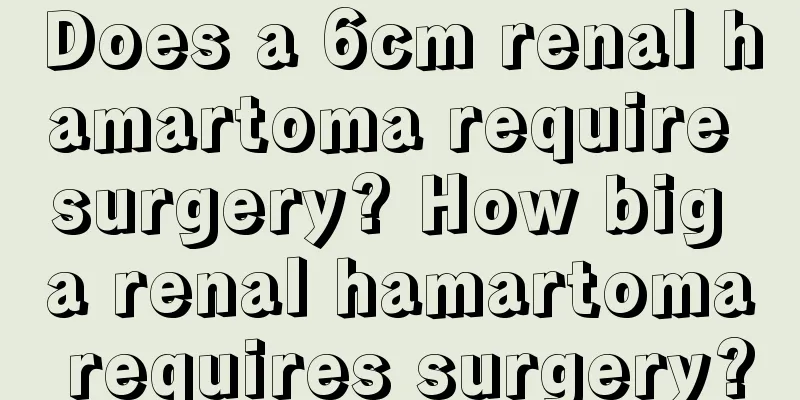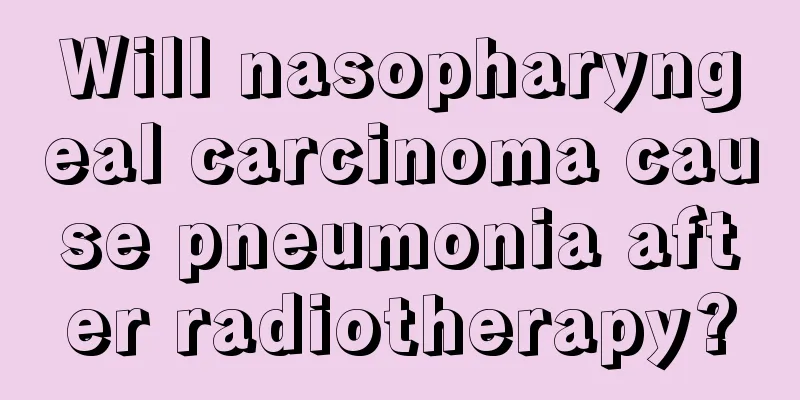Does a 6cm renal hamartoma require surgery? How big a renal hamartoma requires surgery?

|
Renal hamartoma is composed of abnormally proliferating and degenerating blood vessels, smooth muscles and fat in different proportions. Generally speaking, surgery can be performed when the diameter of a renal hamartoma is greater than 4cm, so surgery is required when the renal hamartoma is 6cm. If the tumor diameter is less than 4cm, but the tumor's growth location and development are not optimistic, and the hidden dangers are great, this also needs surgery as soon as possible. Renal hamartoma is a benign tumor, so if it is treated promptly and properly, the prognosis is good and it will not have a big impact on daily life. The size of the tumor is an important basis for doctors to determine whether surgery is needed. After surgical resection, it can be cured and is not prone to recurrence. So does a 6cm renal hamartoma require surgery? How big a renal hamartoma requires surgery? 1. When a renal hamartoma grows to 6 cm, surgery is required. The appropriate surgical plan is selected based on the development of the tumor, such as whether it compresses surrounding organs, whether there is a risk of rupture and bleeding, and the physical condition. Resection as soon as possible is also conducive to postoperative recovery. Treatment principles Tumors <4 cm are not treated; giant renal hamartomas may be treated with nephrectomy. Treatment strategy Tumors <4 cm may not require treatment, but close follow-up is required. Tumors <5 cm may require enucleation; giant renal hamartomas may require nephrectomy. Surgery 1. Nephron-sparing surgery Tumors <5 cm can be enucleated, especially those at the edge of the kidney. For cases with smaller tumors, laparoscopic nephron-sparing partial nephrectomy (LpN) is an effective surgical treatment. 2. Nephrectomy Giant renal hamartomas can be treated with partial or complete nephrectomy. If the disease is bilateral, more consideration should be given to the preservation of renal function. In a few cases, there may be local and lymph node invasion, or even tumor thrombus invasion of large veins, showing malignant behavior, and radical nephrectomy should be performed. Other treatments 1. Embolism Arterial embolization should first be considered in cases of bleeding. According to experience, the volume of the tumor does not decrease after embolization, but the bleeding can be stopped. Superselective renal artery branch embolization is often used to protect some renal function. 2. Kidney transplantation or hemodialysis It is only suitable for patients who must undergo bilateral nephrectomy due to bilateral lesions leading to renal failure or tumor rupture and bleeding. Prognosis Unilateral renal hamartoma is a benign lesion with a good prognosis. Bilateral, multiple lesions and renal insufficiency still affect the quality of life despite conservative treatment. In a few cases where multiple organs are invaded, such as lymph nodes, brain, heart, or even blood vessels, the prognosis depends on the degree and range of the invaded organs. |
>>: What are the main causes of renal hamartoma
Recommend
Candida Treatment
Many people don’t know what Candida is. Candida i...
Can lotus root and lotus seeds be eaten raw?
The origin of lotus root and lotus seeds is mainl...
Why does hair grow slowly
I often hear some women say with regret that thei...
What are tampons used for?
Tampons were never heard of in China before, and ...
Is silicone harmful to the human body?
Silicone is a relatively special chemical product...
What causes butt pain? Causes of buttock pain
Many people do not pay much attention to buttock ...
Can soybean pillow cure cervical spondylosis?
When cervical spondylosis is severe, it can cause...
Sequelae of nasal bone fracture
The nose is a key part of our facial beauty, and ...
How should liver cancer patients be cared for? Liver cancer patients can eat these foods
Liver cancer has troubled many people, because th...
Is ruptured capillaries dangerous?
Capillary rupture is very common in daily life. I...
You will find the symptoms in the first week after successful ovulation and implantation
Couples who are preparing for pregnancy should pa...
What are the symptoms after being bitten by ticks?
It is the Qingming season now, and many people ar...
What is gastric hyperplasia?
There are many types of stomach diseases. Differe...
My waist feels like it's falling, what's going on?
The waist is the most critical and important part...
Is it generally accurate to say that B-ultrasound suggests that it may be a hamartoma?
B-ultrasound is highly accurate in diagnosing ham...









